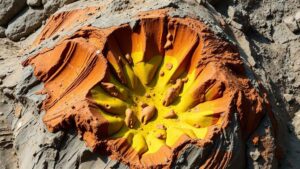Techniques for Processing Ore at High Efficiency With Minimal Equipment
Techniques for Processing Ore at High Efficiency With Minimal Equipment
In the field of mineral extraction, efficiency in ore processing is paramount, especially for small-scale miners and operators with limited resources. This article explores various techniques that allow for high-efficiency ore processing with minimal equipment, utilizing methods that are both cost-effective and practical in diverse operational contexts.
Understanding Ore Processing
Ore processing involves several stages, including crushing, grinding, and concentration, ultimately leading to the extraction of valuable minerals. Traditional methods may require significant infrastructure and machinery, but modern techniques increasingly emphasize low-tech, high-efficiency solutions that can be adapted to various scales of mining.
Gravity Separation Techniques
One of the most effective methods for processing ore without extensive equipment is gravity separation. This technique exploits the differences in specific gravity between the valuable minerals and the gangue (the waste material).
- Panning: A simple yet effective method often used by prospectors, panning involves agitating a mixture of water and dirt in a shallow pan, allowing heavier minerals to settle while lighter materials are washed away.
- Shaking Tables: These devices use a combination of motion and water flow to separate minerals based on density. They are particularly effective for fine ores and can achieve high recovery rates.
For example, in artisanal mining operations in Africa, many small-scale miners rely on panning and shaking tables to successfully extract gold from alluvial deposits, highlighting the effectiveness of gravity separation methods.
Flotation Techniques
Flotation is another common ore processing method that can be adapted for use with minimal equipment. In its simplest form, flotation involves adding chemicals to a slurry to create a froth that selectively collects valuable minerals.
- Handheld Flotation Gear: Small-scale miners often use handheld flotation devices that allow them to operate in streams or shallow waters, increasing mobility and reducing the need for permanent structures.
- Bioflotation: Emerging studies suggest the use of microorganisms to enhance flotation processes, offering an eco-friendly alternative that can be performed without heavy machinery.
In Chile, small-scale copper miners have adopted portable flotation setups that significantly reduce operational costs while improving recovery rates, making this method particularly advantageous for those with limited resources.
Crushing and Grinding Innovations
Efficient crushing and grinding are critical for liberating valuable minerals from the ore matrix. Low-tech solutions can yield satisfactory results, especially when combined with gravity and flotation methods.
- Manual Crushing: Simple manual tools such as mortar and pestle or hand-cranked crushers can be employed for smaller batches, allowing for control over the particle size.
- Ball Mills: In some instances, small-scale miners utilize makeshift ball mills constructed from readily available materials to grind ore effectively.
For example, in parts of South America, miners create small, durable ball mills using recycled barrels, maintaining efficiency without the need for high-capacity equipment.
Sustainable Practices in Ore Processing
Useing sustainable practices is crucial for reducing the environmental impact of ore processing. Techniques such as using non-toxic agents in flotation and recycling water can significantly reduce the ecological footprint of mining operations.
- Recycling Water: Using techniques to recycle water can lower operational costs and reduce freshwater consumption, crucial in arid regions.
- Solvent Extraction: In certain applications, such as copper recovery, low-tech solvent extraction processes can be employed to minimize the need for extensive chemical processing.
The introduction of these sustainable methods is evident in various community-led mining projects in Canada, where local organizations promote eco-friendly practices that align with both efficiency and environmental stewardship.
Conclusion and Actionable Takeaways
Processing ore efficiently with minimal equipment is not only feasible but also advantageous for small-scale miners. By employing techniques such as gravity separation, flotation, and manual crushing, operators can achieve effective recovery rates while minimizing costs and environmental impacts. Here are actionable takeaways:
- Consider integrating gravity separation techniques for initial ore processing to reduce reliance on complex machinery.
- Explore innovative and low-cost tools for flotation, such as personal handheld devices.
- Use sustainable practices like water recycling and the use of non-toxic agents to enhance both efficiency and environmental responsibility.
By adapting these high-efficiency techniques, small-scale miners can improve their operations, fostering both profitability and sustainability.
